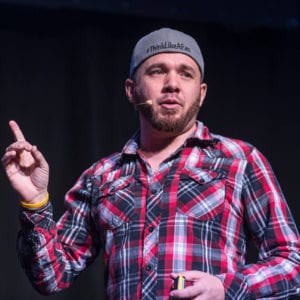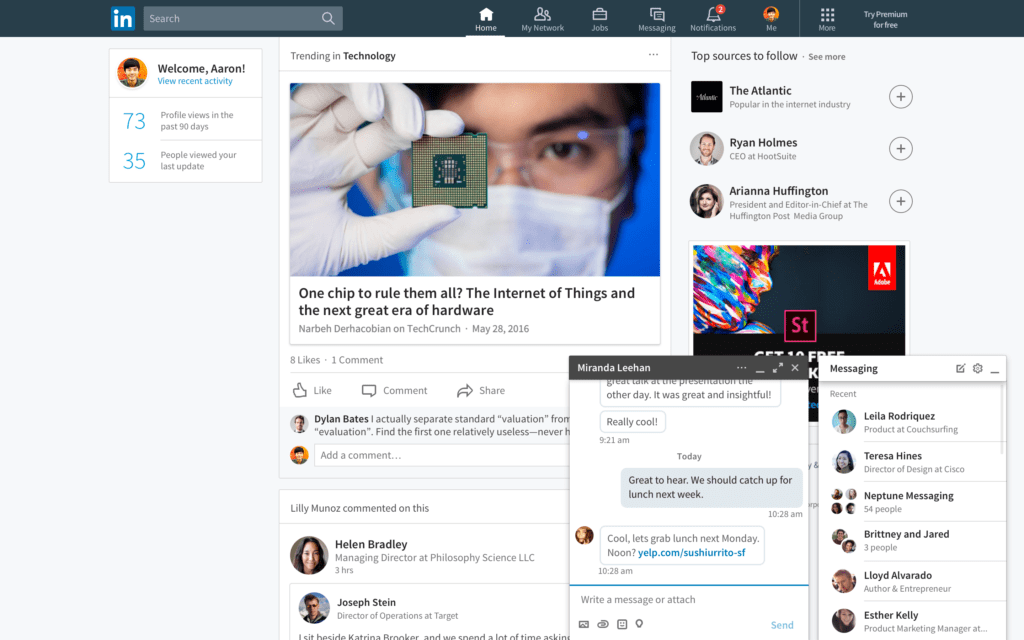4 Reasons LinkedIn Could Provide the Biggest Platform Payoff for Social Marketers
By: Brian Fanzo, Founder and CEO, iSocialFanz; Host of The Social Shake-Up 2019
February 19, 2019
In 2019, the question of where marketers should focus their attention is overwhelming—not only because there is no one answer, but because networks, types of content and user behaviors are always evolving. Keeping that unknown quantity front of mind, I decided to reverse-engineer every client and business opportunity including my speaking business, influencer marketing consulting and podcast sponsorship over the last 18 months.
As much as I love Twitter, Instagram, and Facebook, I’ve been noticing that those who engage with me on LinkedIn not only appreciate the conversation but have a budget to hire me. My data shows that I have more new business opportunities on the platform than on others, and that I closed more of those leads on LinkedIn than via DM on any of the other social networks.

Brian Fanzo, Founder and CEO, iSocialFanz; host, Social Shake-Up 2019
That doesn’t mean I’m going to be using LinkedIn exclusively going forward, but I would break down the true business value of each platform in this way:
- Twitter: Public conversations to establish thought leadership, get discovered by new accounts and connect my content with new audiences, similar to networking events.
- Instagram: An unfiltered, authentic look into my life. I add a personal element to business connections and build trust with my community and peers beyond what I do for a living.
- Facebook: Staying up-to-date with my peers, family and friends so that they know what I’m doing in my business (but most of the engagement comes from those that would never hire me).
- LinkedIn: Sharing content and creating conversations with those I’ve worked with over the past 15 years, while establishing thought leadership and keeping the clients I work with top of mind.
So, what is working for me on LinkedIn?
Publishing new perspectives and connecting with other thought leaders. Since 2013, I’ve considered myself a power-user of LinkedIn, logging in at least once a day to comment on what others are sharing, conduct research for upcoming calls or weed through the spammy pitches in my InMail. When LinkedIn rolled out its Publisher feature, I dove in, posting weekly blogs with some success early on. But as they opened up that service to more users, I found that sharing links to my blogs or website worked just as well as creating a blog natively.
Over the past five years, I posted content about four to six times a week on LinkedIn. I would get some shares and comments, but nothing mind-blowing. The value of LinkedIn drastically changed for me when the platform added its native video feature in 2017. My network was strong and the engagement on my posts was high—but my videos were getting 10 times the engagement and visibility of my other posts. (Here’s a post I wrote in 2017 on why I was bullish on Linkedin video.)
A better way to do social video. LinkedIn limits native videos to 10 minutes, which prevents content creators from dumping all of their YouTube videos onto LinkedIn. This also manages the expectations of the average LinkedIn user: They know that when they see a video, it will only distract them from their workday for 10 minutes at most. LinkedIn also included the ability to use and follow hashtags in 2018, which I use with my videos to gain visibility in search. I also use my own personal hashtags, like #PressTheDamnButton. This acts as a playlist for all of the videos I created using that hashtag.
Unique metrics. LinkedIn gives you some amazing insights into who is watching your videos, including company names, business titles and what cities most viewers are watching from. I use this data to help determine what other content I might share during a given week.
Reaching business leaders where they want to be reached. I’ve found that most users who engage with my LinkedIn videos aren’t on other social networks during the work week—and likely only check Facebook on the weekend for family-oriented posts. Therefore, creating LinkedIn videos to preview an upcoming event I’m speaking at or recapping a podcast I just published works really well, reaching an audience that isn’t tracking my day-to-day on Instagram or following my 20-plus tweets a day on Twitter.
For more details on the strategies I’m using for my weekly LinkedIn videos:
- Listen to the first episode of my new podcast with Amy Landino called Just Try This.
- Check out a successful LinkedIn video that went behind the scenes of my podcast.
Connect with Brian on LinkedIn, and meet him in person at The Social Shake-Up, May 6-8 in Atlanta.


